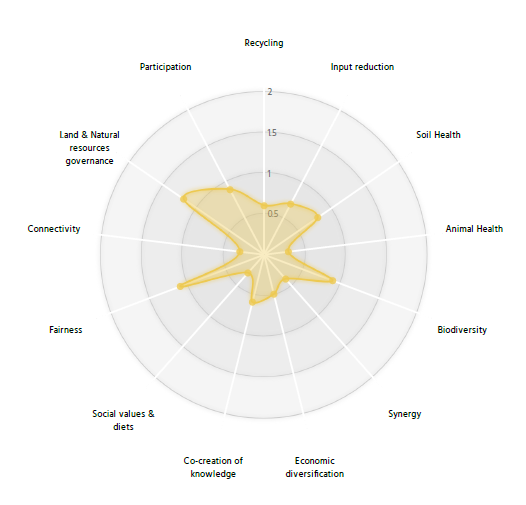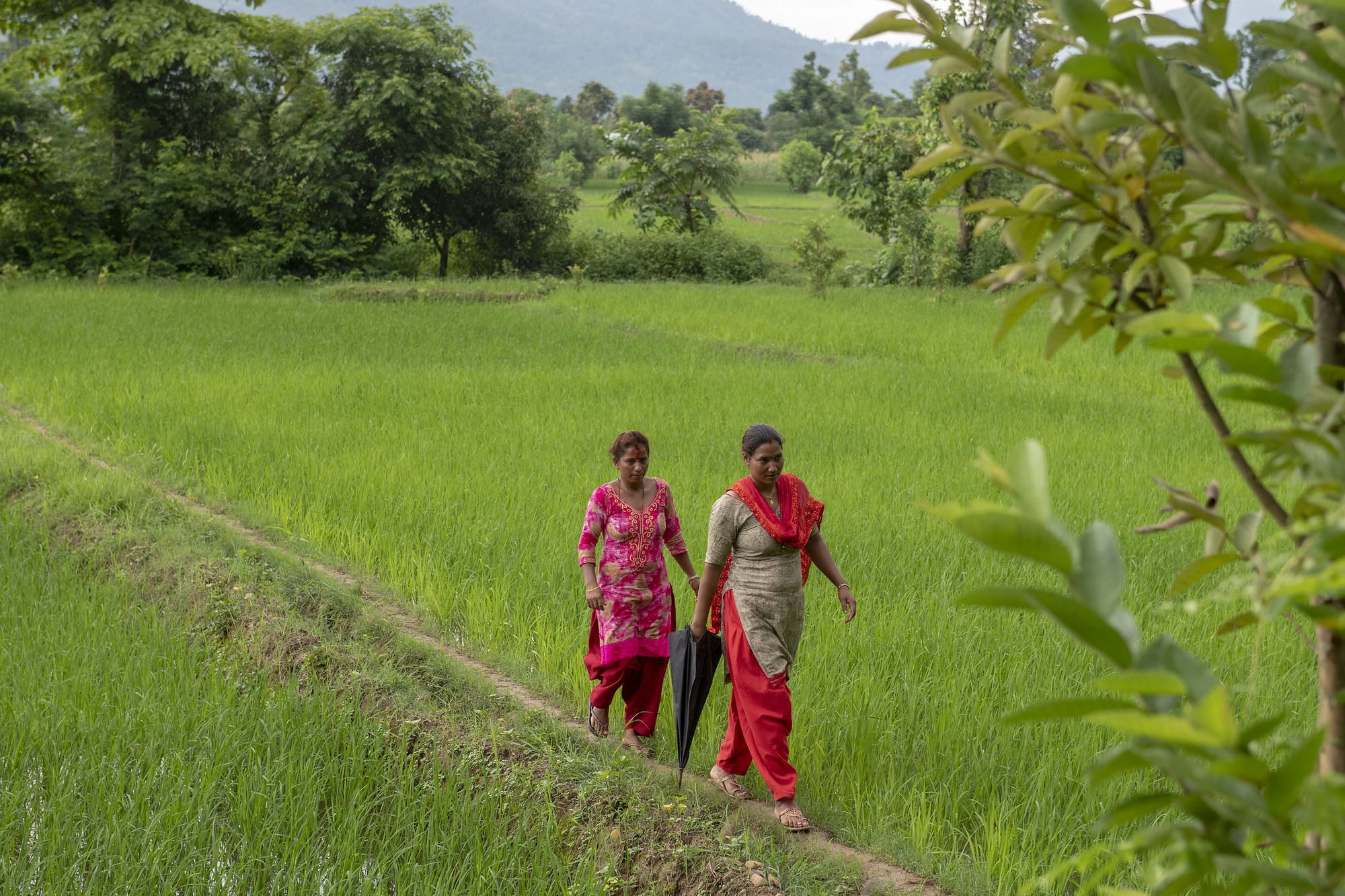
Agroecology
Peru
Country activities are led by the Alliance of Bioversity International and CIAT and the International Potato Center (CIP), members of CGIAR.
Contacts:
- María Claudia Tristán (m.tristan@cgiar.org), country lead for the Initiative on Agroecology
Related News
- Leveraging agroecology transitions: Central messages from Initiative partners and stakeholders
- Peruvian producers are banking on cacao with the aroma of sustainability
- Engaging with stakeholders and establishing Agroecological Living Landscapes: Overall reflections
- Supporting the development of agroecological business models by linking food system actors along the value chain
- Food system actors engaged in the co-creation of agroecological innovations – Results of Year 1 engagement in seven countries
Partners
- Cooperativa Colpa de Loros
- Cooperativa Agraria de Cacaoteros – Curimaná
- Terra Nouva
- Agrosalud de Ucayali
- Regional Government of Ucayali (GOREU)
 |
“The Initiative on Agroecology promotes collaborative work among various stakeholders interested in and committed to sustainable development in the prioritized agroforestry corridor. Our entry point is the cacao production system that integrates small farmers into a value chain that is still developing and has great opportunities for further strengthening.
Our local partners have been working in organic production, free of deforestation and integrating options to diversify the production units of cacao farmers. At the same time, we support the strengthening of policy and institutional governance mechanisms to catalyze agroecological trade of Amazonian biodiversity products. As a result and most recently, the regional government where the ALL is located has approved a biotrade strategy with an agroecological focus. Agroecology allows us to approach the system taking into account its complexity. We can identify opportunities and challenges to promote positive changes in the field as well as in the enabling environment to improve family farming.” María Claudia Tristán, country lead for the Initiative on Agroecology |
 |
“Is it possible to develop agriculture while preserving the environment? Of course, there is technology, and that’s what we have to aim for. We don’t have to deforest. All these initiatives (that we are promoting) are precisely to mitigate climate change, to conserve our environment, and above all to develop our agriculture with proper planning.” |
About the Agroecological Living Landscape (ALL)
The ALL is located in Ucayali, in the central-eastern Amazonian region of Peru, with an estimated close to 600,000 population. It is the second largest department in the country (with a surface area of 102,400 km2) and the third least populated area. The economic activity is concentrated in the provinces of Coronel Portillo and Padre Abad, where 89% of the population lives and where the ALL is located.
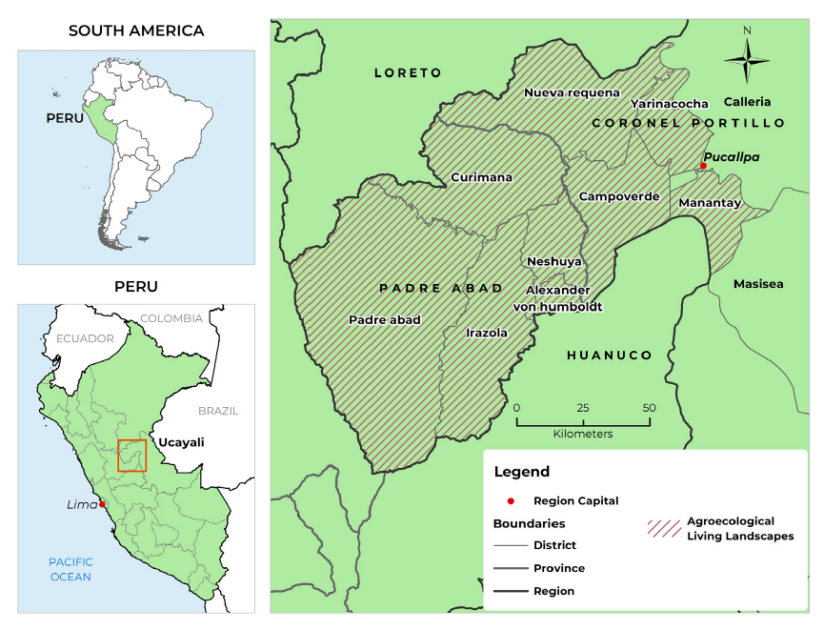
The The ALL includes the entire province of Padre Abad; the districts of Nueva Requena, Campo Verde, Manantay, and Yarinacocha (in the province of Coronel Portillo); and the capital, Pucallpa. It overlaps with what the Regional Government of Ucayali (GOREU) has denominated the Agroforestry Corridor, more commonly known as the Aguaytía basin, with great potential for designing and scaling agroecological innovations and evaluating current solutions. This Corridor is one of the four territorial development units defined in the Regional Government’s Low-Emission Rural Development Strategy.
In the ALL, the agroecological quality of land suitable for agriculture is medium to low. The abundant biodiversity in Ucayali has been threatened by deforestation, mainly promoted by agricultural expansion. Deforestation in the past two decades has been concentrated mainly in the ALL area, which has already lost 40% of its forests.
Agroecological cacao production is the main focus for innovations in the ALL. Cacao is the region’s second most exported product and it constitutes the main livelihood for many of the small producers along the Corridor. Most of the installed areas are managed under conventional systems, and organic and ecological cacao production is still extremely limited in the territory. However, there is interest in scaling up the experiences of cooperatives that work with organic and ecological production systems, while marketing beans to foreign markets, obtaining higher prices, and promoting sustainable practices with small cacao producers.
Read the context assessment:
Analysis of the context and agroecological principles in Ucayali’s ALL
 |
Progress with implementing the Initiative
The Initiative has been facilitating the vision-to-action process, which seeks to promote collective reflection on future food systems and how the agroecology approach can contribute to significant changes that consolidate sustainable, inclusive, and profitable systems. The process concludes with the identification of priority areas to co-design technical, financial, and institutional innovations that contribute to the transition of the system in the Corridor. (Work Package 1)
The CGIAR Initiative on Agroecology and the Private Sector Incentives and Investments (PSii) project of the Agroecological Transitions program, led by the Alliance of Bioversity International and CIAT, work hand in hand with the Colpa de Loros Cooperative and Kaoka to promote more sustainable agricultural practices that improve the way food is grown.
To promote the sustainable use of native biodiversity, the Regional Government of Ucayali in Peru formed a Regional Technical Commission on BioTrade to develop a Regional Strategic Plan following an agroecological approach. The Initiative, together with the NGO Terra Nuova, supported the development of the strategy and its action plan. The plan aims to raise awareness on Amazonian native products, strengthen farmer organizations and institutions, and support local businesses. (Work Packages 3 and 4)
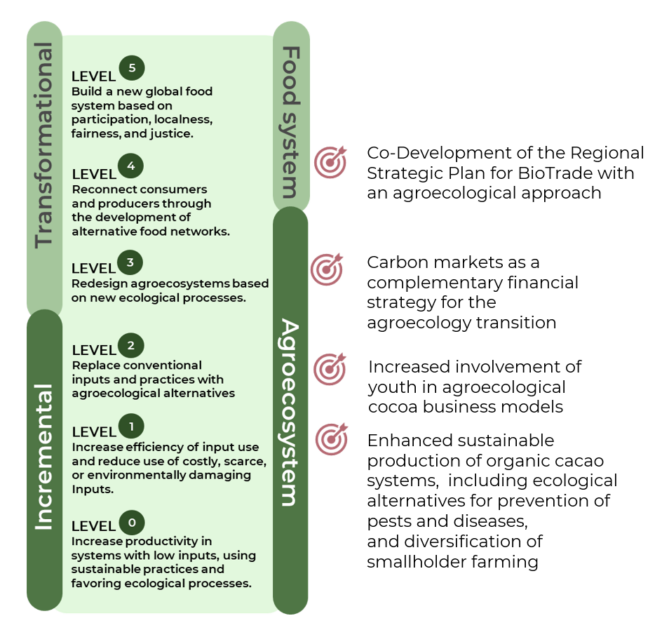
The cacao producers emphasized their interest in addressing the agroecological transition at the farm level, which opens the future possibility of exploring business model opportunities in complementary value chains that could result from intercropping plantain and cacao. (Work Package 3)
An impact assessment study will characterize 850 producers whose main activity is cacao, with 340 producers having been surveyed by mid-2023.
The Initiative has been working with local stakeholders to reconstruct the history of agroecology in the region to identify catalytic and influential factors in behavioral changes and to feed strategies with key partners in the region. (Work Package 5)
 |
 |
 |
Photos: Workshops to develop the Theory of Change and the ALL-Action Plan – Agroecological Corridor Watershed.
Credit: Alliance of Bioversity International and CIAT.
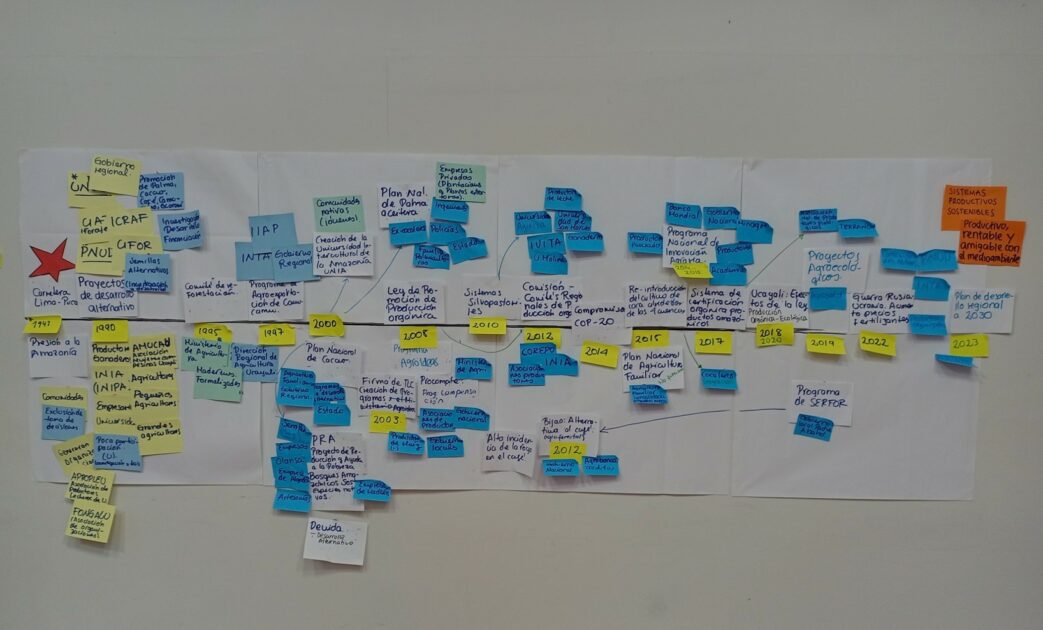
Context
Peru is one of the world’s most biodiverse countries. Together with 16 other megadiverse countries, it is home to 70% of the planet’s biodiversity, with a wide variety of flora and fauna that is fundamental to the development and well-being of its inhabitants. Peru is one of the world’s fastest-growing economies owing to an economic boom experienced during the 2000s. The country is still trying to overcome the challenges of economic growth, incorporating environmental sustainability and social inclusion as key elements for development. In this context, the Amazon is a territory with multiple opportunities to contribute as a driver for the country’s sustainable development.
Since 2019, organic cacao cultivation has gained great popularity among producers in Peru, positioning the country as the second largest producer of organic cacao worldwide. One of the institutions that has worked with organic cacao producers in the Ucayali region is the Colpa de Loros Cooperative. Since 2015, this cooperative has partnered with French chocolatier Kaoka, through which more than 500 producers benefit by exporting organic cacao to France and implementing responsible farming on their farms.
Currently, Ucayali is the third largest cacao producer in the country, with a production of 21,600 tons and 22,000 hectares harvested in 2021. Peru is home to at least 60% of cacao’s genetic diversity. However, by 2011, variety CCN51 was recorded as the most prevalent among cacao producers, occupying approximately 73% of the area cultivated in Ucayali.
